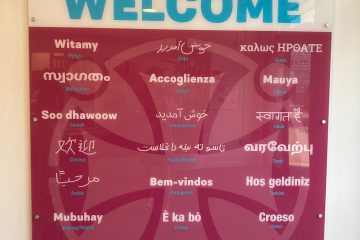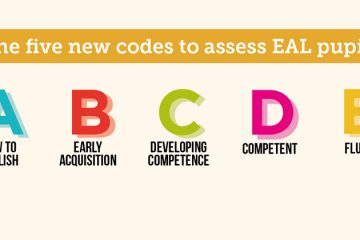Catherine’s latest article for Across Cultures – ‘The Language of Online English’
The ‘new normal’ will continue to include remote learning.
Read Catherine’s tips for how to make lessons more accessible for learners with EAL…
To mute or unmute? To reply to one or everyone? To use gallery or speaker view?
Like it or not, everyone involved in education in early 2021 is learning a relatively new and constantly evolving language… the language of digital/online/remote learning. Of course, having access to digital devices – and the Wi-Fi or data to use them – as well as the ongoing support of teachers and parents, are vital for pupils, but remote learning also needs a degree of fluency in the language of ‘online English’. Arguably true for all pupils, I’m going to focus in this article on those pupils who are ‘remote learning’ through English as an Additional Language (EAL) – and specifically, those at the early stages of English language acquisition.

EAL pedagogy and/or online learning?
I’ve been lucky enough to have worked with hundreds of teachers (mainly primary) in London and Bristol over the years, exploring together how to identify and develop effective strategies for teaching EAL pupils. Does this EAL pedagogy apply to online learning? From my perspective, the answer is a resounding ‘yes’. Can we use our EAL expertise when planning and teaching online lessons? Yes! In our changed world of having to spend huge amounts of energy on digital development, let’s remember that our teaching skills and expertise remain – and let’s find new ways of applying them to the online learning context.
What do we mean by EAL pedagogy?
Ahead of this, let’s remind ourselves of some key elements of EAL pedagogy:
- Knowing our EAL pupils’ linguistic profiles – which languages do they speak and write?
- Developing vocabulary – breadth as well as depth; everyday as well as technical
- Scaffolding sentence structures – for both speaking and writing, linked to functions
Applying effective EAL approaches to the online learning context
Regardless of the curriculum focus, it can be useful to consider elements 1-3 above when planning a lesson or series of lessons for a topic in any subject area. As remote learning is the topic of interest here, I’m going to suggest some content and strategies to develop early stage EAL learners’ fluency in ‘online English’, so that they can better engage remotely.
The resource accompanying this article gives examples about how to consider these elements when planning lessons for the topic of ‘online English’, including vocabulary and language structure flashcards. You can download the resource by clicking on the buttons at the top and bottom of the article.
Summary
It’s all about access and comprehensibility. As in the face-to-face classroom, pupils at the earlier stages of English language acquisition will be better able to understand and respond during online lessons when the language – in relation to the content – is made clear, starting with fluency in ‘online English’.
References:
Further information on Language Demands
NALDIC website
Original article: https://www.axcultures.com/online-english/



0 Comments